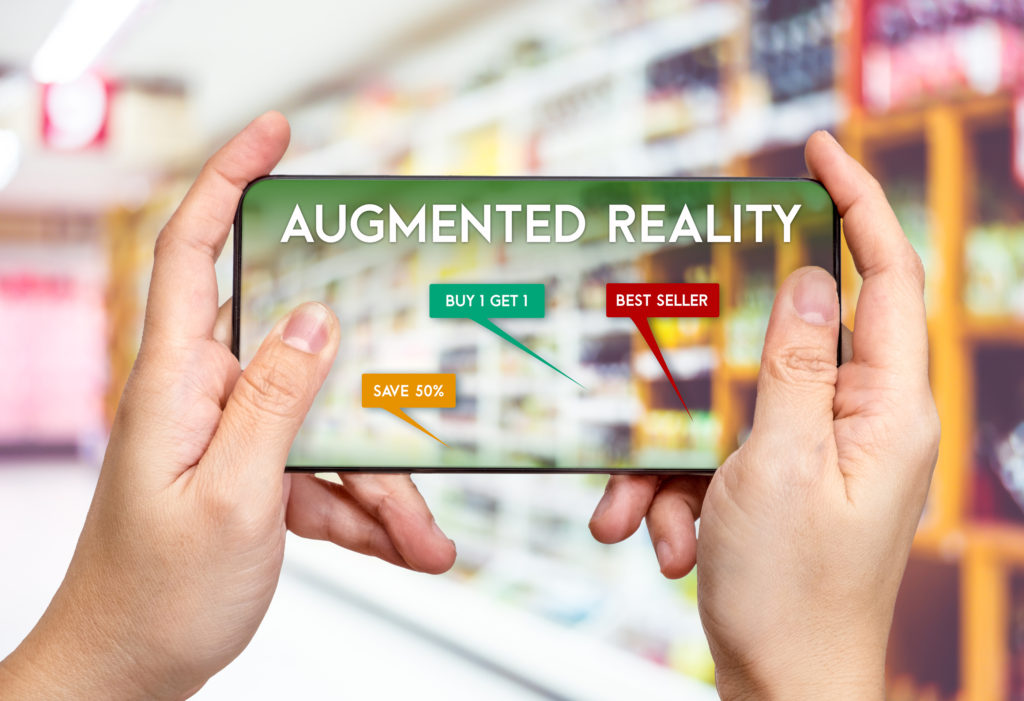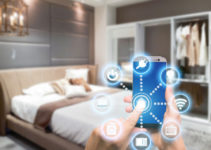
Augmented reality, or just AR for short, doesn’t get the same amount of love as virtual reality. That’s a real shame because AR has the potential to change the way we see the world around us. Furthermore, AR doesn’t require any expensive accessories like a heads-up-display (we’re looking at you Microsoft) or special eyeglasses (we’re looking at you, Google), just your iPhone. Thanks to Apple, we can see more clearly how much AR can enhance and improve our lives. In this article, we’ll give you a short rundown on what is augmented reality, what you need in order to use AR on the iPhone or iPad, and what cool things you can do with it.
So, let’s set out on a journey through the miraculous world of augmented reality!
CONTENTS:
- What is Augmented Reality?
- What do you need in order to use AR on the iPhone
- How to use AR measuring apps on iOS 12
- How to measure an object using iOS measure
- Best AR tricks your iPhone can do
What is Augmented Reality?
Augmented Reality (AR) is a technology that works by overlaying digital information onto the real world. This is usually achieved by using smartphones or other devices such as special glasses and headsets. In general, an augmented reality application lets you see through the camera of your phone. The application then adds the data delivered from the internet to image currently being displayed on the phone’s screen.
The most famous example of augmented reality is Pokemon Go. Niantic, the company that developed Pokemon Go, set a gold standard at how an AR game, or any other AR app, should work.
With Pokemon Go, you launch the application first and then point your iPhone at something. The application then displays what’s being seen through your iPhone’s camera. Then if there’s a Pokemon nearby, the digital character is displayed by overlaying it over the image it receives from the phone’s camera.
Another excellent example of how augmented reality should work is the Vivino app, which helps you keep track of the wines you drink. When you visit a restaurant, you can, with the help of AR, hold the wine list up to the phone’s camera so it can read out its contents. The Vivino app recognizes every wine on the list and then overlays the average rating of the wine onto the list, helping you avoid bad vines.
Because augmented reality works with many existing smartphones (not just iPhones, but have an edge over other manufacturers), and because you can use it more naturally in your daily life and don’t need to put on a bulky headset that cuts you off from the real world like VR, many analysts predict that AR will become widely used. If tech companies continue to develop the technology, it will change the way we do many things. AR has grown beyond just Snapchat and Facebook filters.
What Do You Need In Order To Use AR On The iPhone
Unlike VR, which requires hardware that can be difficult to set up, almost anyone can use augmented reality on their iPhone. All you need is an application that has augmented features. Some apps may require some additional features such as GPS or WiFi, but ultimately, all you need is a smartphone that can run apps.
Since the release of iOS 11, basically, all recent iPhones can now support augmented reality at the operating system level. This is all thanks to Apple’s ARKit framework, which they created to help developers create AR applications more easily. Thanks to iOS 11 and the introduction of ARKit, there’s been an explosion of AR apps. Today, you can find AR apps that can help you pick furniture, measure space, try out clothes, and much much more.
The future will bring us many cool new things. Even cooler than the augmented reality features integrated into iOS 11 and the hardware to support them on the iPhone X, is the rumor that Apple is working on eyeglasses that will have augmented reality features built in. Apple’s AR glasses would be just like Google Glass but connected to your iPhone. Applications on your iPhone would feed data to the glasses, and that data would be displayed on the lens of the glasses where only you can see it.
However, if we’ve learned anything from the Google Glass experiment is that you should keep the hype to the minimum. Only time will tell whether Apple will ever release AR glasses and if they do will they be successful. There is a glimmer of hope. Apple has a long track record of making technology fashionable and, most importantly integrated into our daily lives. If any company can succeed in launching AR glasses, then that is Apple. And, if Apple does succeed in this endeavor, many other companies will launch their own line of AR glasses.
How To Use AR Measuring Apps On iOS 12
When ARKit was introduced, some of the first iPhone AR applications to hit the iTunes store were apps that help you measure stuff around your home. With the introduction of iOS 12, Apple gives you an awesome built-in option.
iOS 12 introduced ARKit 2, the second generation of Apple’s augmented reality development framework. And with the introduction of ARKit 2, Apple also unveiled an inbuilt measuring app for iOS. This application represents a perfect example of what augmented reality can really do, and for that reason, we’ve decided to guide you through how best to use it.
Before we get into more detail, please note that Measure requires ARKit, which is not supported on every device that runs iOS12. To be able to run iOS Measure, you need an iPhone 6s or later. If you have an iPad, you need an iPad Pro or a 2017 or later iPad.
How To Measure An Object Using iOS Measure
After you’ve launched the Measure app, you’ll be prompted to slowly move your iPhone/iPad around your environment. This is required because ARKit is getting a sense of your surroundings so it can gauge the distance of objects, figure out where the surfaces are, and orient itself.
Your iPhone will only be able to measure objects that are within a certain distance. iOS is able to measure objects that are no further than 8 to 10 feet away from you, depending on the lighting. So, if you ever see a prompt that says “find a nearby surface to measure” you should either step closer or find a way to better illuminate the object.
When you get close enough, you’ll see a small dot in the center of the screen. To start measuring, tap the + button to add a point. Then simply move your iPhone until the line stretches as far as you like. The line will snap to corners, and in order to keep measuring, you will have to tap the + button again.
The measurement will be displayed in the center of the line. To continue measuring, you can tap the + button on an existing point to add another line, continuing until you have all the measurements you need.
Once you’re finished taking measurements, the circular shutter button located next to the + button will light up, making it easy to take a screenshot containing your measurements.
You can’t believe how useful this feature is. Uncle of one of our writers is in the construction business, mainly working on PVC windows and doors. He uses this feature to take measurements of windows and doors and relays this information to his workers at the workshop so they have a basic idea of what they need to build. This is just one use of many uses for this app.
Recently I had to install a mosquito net frame in my apartment, and I used this feature to take measurements so I can send it to my carpenter uncle. The mosquito net was a perfect fit, even though my uncle was skeptical about the measurements he had a ballpark idea of what needs to be made.
Measuring Rectangles
The Measure app can automatically detect rectangles. If you get close enough to a medium-sized rectangle, the Measure app will automatically detect it and highlight it in yellow. To measure the highlighted rectangle, just tap the + button. It will display the length of each side of the rectangle, including the area the rectangle covers.
Using The Level
The iOS Measure app comes with not one, but two level features. To use one of these features, all you have to do is tap the icon located at the bottom of the screen.
If you’re holding your phone horizontally, you’ll see two circles and a number showing how many degrees off center you are. Slowly tilt the phone until the circles align, and the screen turns green.
When you turn your phone vertically, the app will automatically switch to vertical leveling mode. You will see a horizon line and a number showing how many degrees of-level you are. Slowly tilt your iPhone until it’s leveled and the screen turns green.
You can toggle the background between black and red by tapping on it. This is very useful when the sunlight is directly hitting your screen.
Making Adjustments And Increasing Accuracy
It’s perfectly normal for the measurements to drift a tiny bit, or seem to float in front of the object you’re trying to measure. This issue is most common when the lighting is too poor. Fortunately, you can easily fix this. After you’ve taken a measurement, you can move your iPhone until any point is in the middle of the screen. After you’ve centered your phone on one of the points, tap and hold it, and drag it until you’ve made the necessary corrections.
The best way to improve the accuracy in iOS Measure is to start off in a well-lit area. Makes sure there enough light before you launch the pp and go through the process of moving the iPhone around to orient it. iOS Measure works best when you place points on areas of high contrast or sharp corners.
Finally, keep in mind that iOS Measure is meant to give you ballpark figures. It is best used for those “will this object fit on this shelf” moments. If you want real precision, or if you don’t have a lot of room for error, you better take out the tape measure just to be sure.
Best AR Tricks Your iPhone Can Do
Thanks to Apple’s ARKit, taking measurements of objects around you is not the only trick your iPhone can do. So here’s a list of cool AR tricks your iPhone can do.
1. You can browse DIY furniture with IKEA Place
When you walk through the labyrinth known as the Ikea showroom, everything looks perfectly placed. But to make sure that the new sofa you’ve been eyeing will actually fit in your living room, the new IKEA Place app lets you test virtual versions of its furniture pieces in your home before you decide to buy them. It makes deciding on colors and finishes incredibly easy, and it even lets you avoid rowdy weekend crowds at those massive Swedish warehouses altogether.
2. See if your future car will fit in your garage
Making sure a five hundred dollar IKEA couch fits in your living room isn’t as nearly important as making sure your five-figure dream SUV will actually fit into your garage. Thankfully, you can download the Edmunds car shopping app from the iTunes App Store. This app allows you to scan your garage or parking spot and then place virtual version of a vehicle you’re interested in buying to confirm it will actually fit. It isn’t a replacement for a test drive, but then again, nothing is. It serves the purpose of giving you a good estimate of how the car will sit in your garage or parking lot. Why get your heart set on a Cadillac Escalade if you won’t be able to close your garage once you drive it home.
3. Try out a new look using AR
If you’re on the hunt for a new look that, hopefully, doesn’t involve turning your face into a talking poop emoji, the ModiFace app will let you try personal beauty products from the comfort of your bed. The app creates a virtual beauty corner, similar to those found in shopping malls, that is filled with products customized to your preferences and likes. You can see a specific product, such as mascara, applied to your headshot. If you decide you like it, you can make a purchase directly through the app.
4. Redecorate your room using AR
Repainting your room, replacing the furniture, fixtures, and decorations is an expensive and arduous process. Why risk a bad redecoration job when you can use Wayfair. This app uses augmented reality to give you a 3D preview of your decoration plan. You can preview absolutely everything, from chandeliers to chairs. It gives you an excellent idea of what the furniture will look like in a freshly painted room. Who knows, you might end up linking the new chair you found in the app that you’d rather repaint the wall again just so it can match it.
5. Improve your architectural doodles
The first step in renovating a room is sitting down with a pen and paper and sketching out what you would like the final result to look like. Unfortunately, many of us have trouble with drawing the simplest of things, let alone a room plan. Thankfully, Morpholio’s new Trace app makes it easy to doodle architectural-grade floor maps and layouts by simply tracing over overlaid perspective plans. It works either through photos or via a live feed from the iPhone’s camera, and it might even make you feel better for shelling out cash for that iPad Pro and that fancy-schmancy Apple Pencil.
6. Draw completely legal graffiti
Aspiring Banksys rejoice! For you can now finally express your creativity by tagging buildings, parks, or anything else on earth, without the worry about police catching you. World Brush lets you create a virtual painting that is only visible to other users of the app, and who happen to be on the location you tagged. The artworks are completely anonymous, but they do have a rating system which helps the developers showcase impressive virtual paintings. Hunting for this incredible art can be an excellent past time, trust us!
7. Find your keys
There’s an endless list of companies which make keychain Bluetooth trackers that allow you to find your keys no matter how deep they are embedded in the couch. The Pixie Tracker goes one step further. It takes advantage of Apple’s ARKit to make it a lot easier to find those pesky keys that seem to get lost only when you’re in a hurry. Looking through your iPhone’s screen, you’ll be able to see visual clues that direct you to the lost object, instead of you having to rely solely on sound like a human-sized bat.
We can continue listing things you can do with your iPhone’s AR features until the end of time. So we decided to stop here. The future is bright for this technology, and we are sure that in a couple of years even your car will have some AR features. Let us know what you think about AR. Is it doomed to stay as cool toy, or does it have the potential to change the world? Let us know in the comments below!


